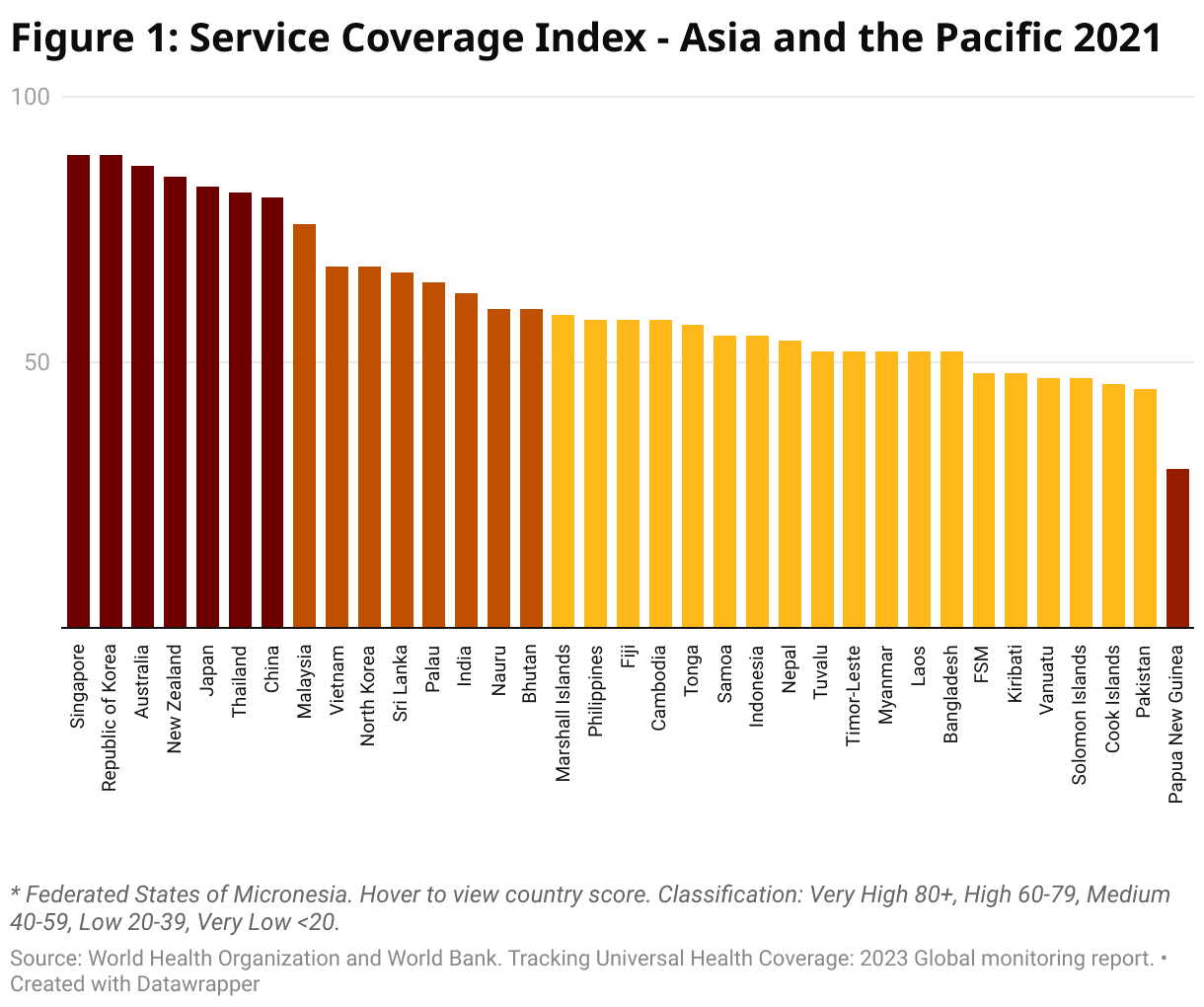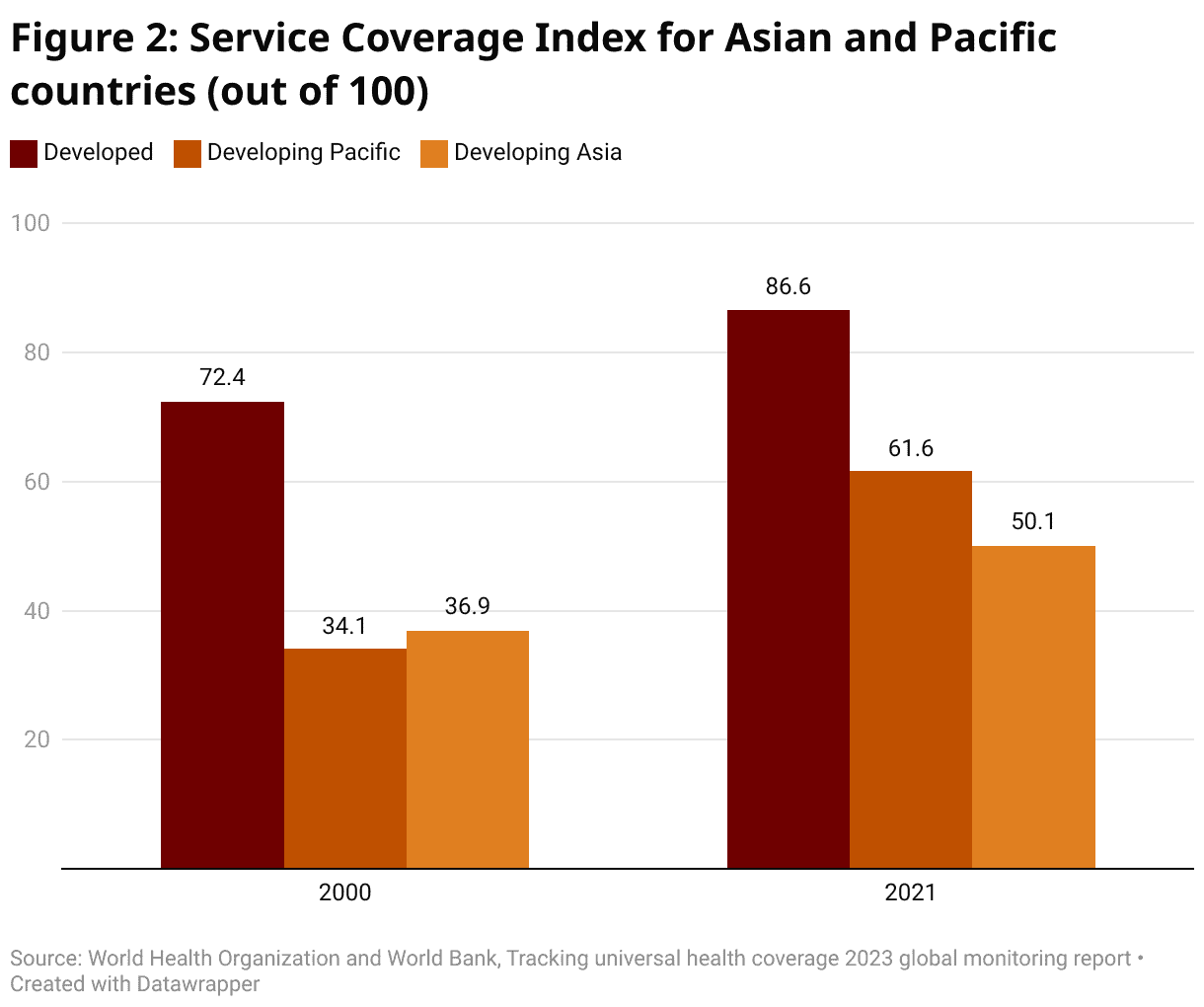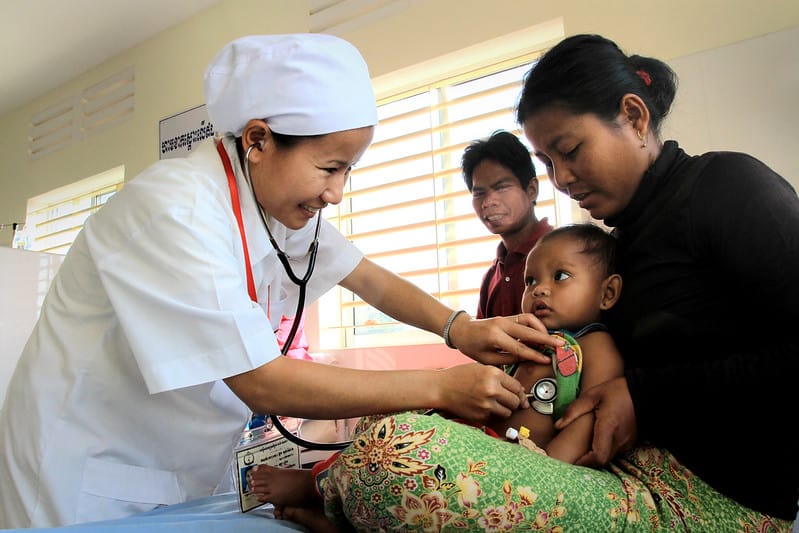According to the World Health Organization, Universal Health Coverage (UHC) requires that all people receive the promotive, preventive, curative, rehabilitative, and palliative health services they need and can afford. The latest WHO and World Bank 2023 review Tracking Universal Health Coverage finds that “The world is off track to make significant progress towards UHC … by 2030 as improvements to health services coverage have stagnated since 2015, and the proportion of the population that faced catastrophic levels of out-of-pocket spending has increased”. This article looks at service coverage in Asia (East and South) and the Pacific Islands Forum member countries, including Australia and New Zealand.
The UHC Service Coverage Index (SCI) tracks progress in 194 countries, measured by 14 key indicators under four headings: reproductive, maternal, newborn and child health; infectious diseases (such as TB and HIV/AIDS); non-communicable diseases (for example diabetes); and overall health access and capacity (with reference to indicators such as the number of health workers).
Figure 1 presents the SCI scores for the Asia-Pacific for 2021. Our region is home to neither the best performing country globally (Canada, with an SCI score of 91), nor the worst (Somalia, 27). However, the region traverses almost the entire range from Singapore (89) to Papua New Guinea (30). Overall, there are few surprises: the developed countries do best, then the developing countries of Asia, and then the Pacific countries, which occupy seven of the bottom ten slots.

Things become more interesting when we compare 2021 with 2000. Overall, despite the recent pandemic, it is a positive picture, with the average Asia-Pacific country improving its SCI by 20 percentage points. On average, the lower a country’s service coverage in 2000 the more it improved by 2021.
Asian countries improved a lot more than Pacific ones. As the next graph shows, in 2000 the average Asian country had slightly worse service coverage than the average Pacific island country (34 vs 37) with both groupings only about half of the developed country average (73). However, by 2021, the situation had been reversed. All regions improved their scores, and both Asia and the Pacific caught up to some extent with the developed countries. But the developing Asian countries have gone from being slightly behind to now well ahead of the developing Pacific countries (62 vs 50).

What explains this? There may be some data issues. Neither Cook Islands nor Niue showed much improvement at all. But all the citizens of these countries have New Zealand passports, and so can potentially benefit from New Zealand health care. Their low scores, whatever the reason, are probably misleading.
But there are also some real problems. Even if we take out Cook Islands and Niue, the Pacific still starts off ahead of Asia, and ends up behind it. PNG shows one of the slowest rates of progress of any country in the world. Only two countries – Chad and Somalia – now have lower service coverage scores than PNG. Only one Pacific country shows a service coverage improvement of more than 20 percentage points (Nauru) and none shows an improvement above the Asia developing country average of 25 percentage points. Cook Islands “graduated” from medium to high coverage over the period 2010 to 2019 but fell back to medium coverage in 2021. The scores for Fiji and for the Federated States of Micronesia have barely moved since 2015 and 2010 respectively.
The performance of some of the Asian countries is truly extraordinary. Seven have more than doubled their score. Nepal shows the biggest proportional increase, rocketing up from 20 to 54. Several Asian countries graduated from low service coverage in 2000 to high in 2021 (Bangladesh, Cambodia, China, India, Myanmar, Nepal and Timor-Leste) or very high (Thailand and Vietnam). Only one Pacific country (Nauru) made the transition from low to high service coverage over the same period.
Why the Pacific has been left behind is an important question. An examination of Annex 2 of the report reveals the specific achievements – and shortcomings – relating to service coverage in the region. Stepping back, one obvious difference between the two regions over this period is in relation to economic growth. The much faster economic growth that Asia has experienced has meant more resources for both households and governments to put into health care.
Whatever the reason, the slow improvements in health service coverage evident in the Pacific over the last two decades are a source of real concern. We hope they receive the attention they deserve.
This article appeared first on Devpolicy Blog (devpolicy.org), from the Development Policy Centre at The Australian National University.
Ian Anderson is an associate at the Development Policy Centre. He has a PhD from the Crawford School of Public Policy, Australian National University; over 25 years of experience at AusAID; and since 2011 has been an independent economics consultant.
Stephen Howes is Director of the Development Policy Centre and Professor of Economics at the Crawford School of Public Policy at The Australian National University.
The opinions expressed in this article are those of the author and do not necessarily reflect the opinions of this publication.
